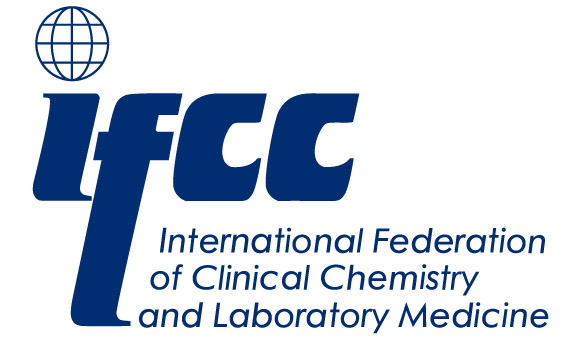1. Newer tests could cut hep C diagnosis steps in half
Going from two steps to one could increase the number of patients who are diagnosed and streamline the cascade of care
Abstract: http://www.annals.or
URL goes live when the embargo lifts
Data suggest that several commercially available tests for hepatitis C virus core antigen (HCVcAg) are highly sensitive and specific and could transform the current two-test screening process for HCV into a single test. A single-process diagnostic for chronic HCV infection could streamline the cascade of care in low- and middle-income countries where HCV is prevalent, but patients are often lost to follow-up. The systematic evidence review, published in Annals of Internal Medicine, will inform an upcoming World Health Organization (WHO) guideline on HCV screening.
Up to 150 million people are affected with HCV, with about 75 percent of those cases occurring in low-and middle-income countries. To make diagnosis of HCV cost-effective, a low-cost screening test for HCV antibodies is followed by a more expensive nucleic acid test (NAT) in patients who test positive for the HCV antibodies. This two-step process presents a major obstacle to diagnosis and treatment because a significant proportion of patients either do not undergo testing or do not follow up after an initial positive screen. This issue needs to be addressed to achieve the ambitious HCV elimination strategy proposed by WHO.
To evaluate the accuracy of HCVcAg tests for diagnosing active HCV infection among adults and children, researchers reviewed 44 published studies that compared any of 5 commercially-available HCVcAg tests with a NAT reference standard. The data showed that several HCVcAg assays are highly sensitive and specific and could feasibly replace NAT for HCV detection. The authors suggest that HCVcAg should be explored for point-of-care testing so that more patients could be diagnosed and treated.
Note: For an embargoed PDF, please contact Cara Graeff. For an interview with the lead author, Dr. J. Morgan Freiman, please contact Elissa Snook at elissa.snook@bmc.org or 617-638-6823.
2. Long-term pioglitazone use is safe and effective for patients with nonalcoholic fatty liver disease and diabetes
Abstract: http://www.annals.or
Editorial: http://www.annals.o
URL goes live when the embargo lifts
Long-term use of pioglitazone appears to be safe and effective for patients with both nonalcoholic steatohepatitis (fatty liver disease) and prediabetes or type 2 diabetes mellitus. Results of a randomized, controlled trial are published in Annals of Internal Medicine.
Nonalcoholic fatty liver disease is reaching epidemic proportions and is the most common chronic liver condition in obese patients with prediabetes or type 2 diabetes. However, the condition is often overlooked and undertreated in these patients. This is a concern because patients with fatty liver disease and type 2 diabetes have an increased risk for vascular complications and are at the highest risk for cirrhosis and liver cancer. Pioglitazone is a medication in the class known as thiazolidinediones. Thiazolidinediones target insulin resistance and adipose tissue dysfunction or inflammation that promotes liver “liptoxicity” in fatty liver disease. For this reason, pioglitazone may be more helpful in treating patients with both fatty liver disease and prediabetes or type 2 diabetes.
Researchers randomly assigned 101 patients with prediabetes or type 2 diabetes and biopsy-proven fatty liver disease to either pioglitazone, 45 mg/d or placebo for 18 months, followed by an 18-month open-label phase with pioglitazone treatment. All patients were prescribed a low-calorie, weight-loss diet. After 3 years, patients were examined for a reduction in fatty liver disease activity without worsening of fibrosis and other histologic outcomes. They found that treatment with pioglitazone was associated with long-term metabolic and histologic improvements. These results suggest that fatty liver disease progression may be halted and the natural history of the disease may be modified with the use of pioglitazone in patients with prediabetes or type 2 diabetes.
Note: For an embargoed PDF, please contact Cara Graeff. The lead author, Dr. Kenneth Cusi, can be contacted directly at Kenneth.Cusi@medicine.ufl.
3. Advanced practice clinicians and primary care docs show similarities in prescribing and referral practices for three common conditions
Abstract: http://www.annals.or
Editorial: http://www.annals.o
URL goes live when the embargo lifts
Despite physicians’ perceptions, advanced practice clinicians (nurse practitioners and physician assistants) are no more likely than doctors to provide low-value health care, or services that do not comply with approved guidelines. The findings, based on a comparison of treatment for three common conditions, are published in Annals of Internal Medicine.
In response to the looming shortage of primary care physicians, many have advocated for expanding the role of advanced practice clinicians (APCs). Studies have shown that APCs provide care of about the same quality as physicians. However, the concern is that APCs may also provide more wasteful or low-value health services than physicians.
In this observational study, researchers reviewed medical records from the National Ambulatory Medical Care Survey and the National Hospital Ambulatory Medical Care Survey between 1997 and 2011 to compare use of low-value services among U.S. APCs and physicians. They looked for guideline-discordant prescribing of antibiotics for upper respiratory infections, referral to imaging for low back pain and headache, and referrals to other physicians for all three conditions. This large national comparison showed that APCs and physicians ordered low-value health services with similar frequency, dispelling physicians’ perceptions that APC’s provide lower-value care than they do.
The author of an accompanying editorial suggests that the study findings provide more questions than answers. For example, a variety of practice setting factors may influence clinical decision-making. The author writes that primary care physicians have substantially greater training and clinical experience, which may be required for correct diagnosis and more comprehensive care when patients are more medically complex. An important question is how to best combine the skills of APCs and physicians for efficient comprehensive primary care.
Note: For an embargoed PDF, please contact Cara Graeff. For an interview with the lead author, Dr. John Mafi, please contact Enrique Rivero at ERivero@mednet.ucla.edu or 310-794-2273
Source: Eurekalert















































